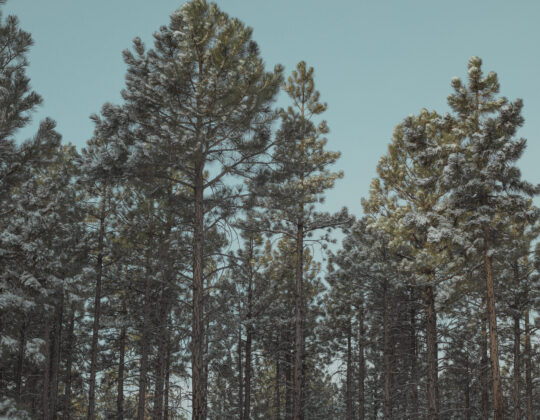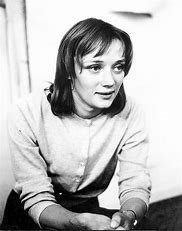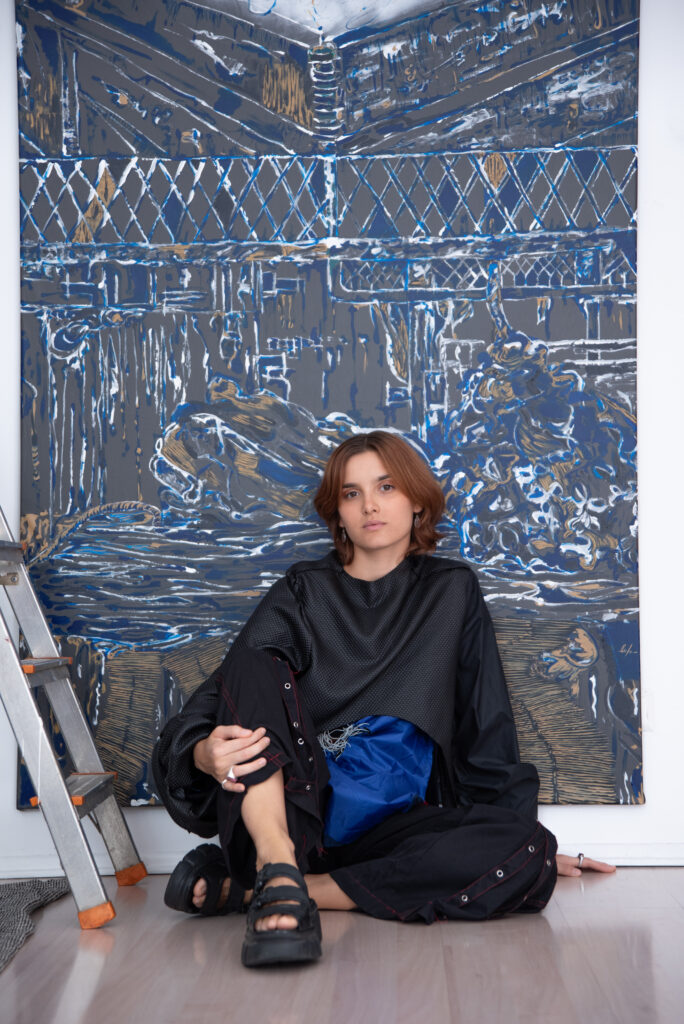
Luiza’s work immediately drew me in. It takes you on a journey of opening up and being vulnerable but carrying within and through it a lot of strength and power. It touched me deeply, opens you up to emotions, weaving stories and other worlds and making you think.
For the following I asked Luiza if she wants to do an interview with me:
Luna Maluna Gri: Tell me a bit about yourself and your work.
Luiza Furtado: I am a dancer. I started dancing before I started talking and I think that says a lot about how I place and create images in my work. In the end, I do painting, I do video, sculpture, but all of them are framing dance. If you’re doing a solo performance, or if there’s a group of people dancing together, there’s a lot of lines being drawn, or connections, and resemblance between these bodies happen, some kind of exchange. Im making prosthetic sculptures, which I start by painting so I can get images and then do choreography. So, dancing for me is a way of drawing these connections. When it comes to the work, I always start talking about dance, because I think it frames my practice a lot.
LMG: How and why did you start creating art?
LF: Since forever. I was a really shy child and drawing then for me was a way to be able to be in my own space. So it protected me a lot, I feel. Drawing, dancing, since I was a kid. But my artistic work, I could say, I started at Design University. I actually do have previous studies in Brazil, in design. And there, it was my first context on understanding the labor of a designer and wanting to shift to something which has more of a political frame. I would say then it’s been maybe seven years that I’m in a consistent artistic practice. I’m a performance artist. I work with costumes, I have this childish, playful energy. I felt that drawing was a space where I could still be a child for a long time, as long as I needed.
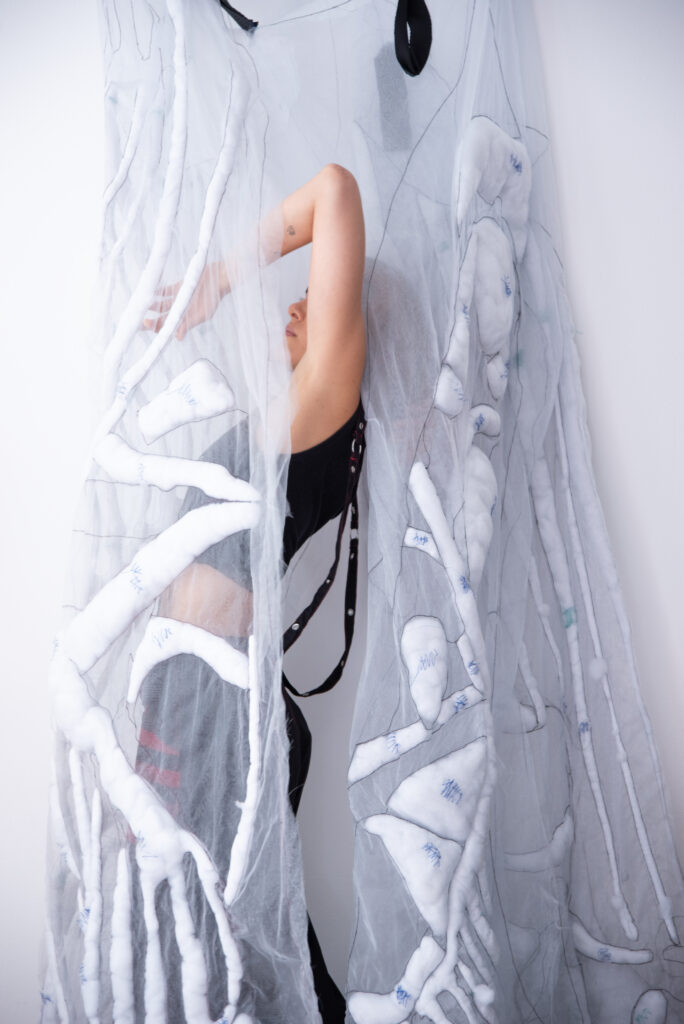
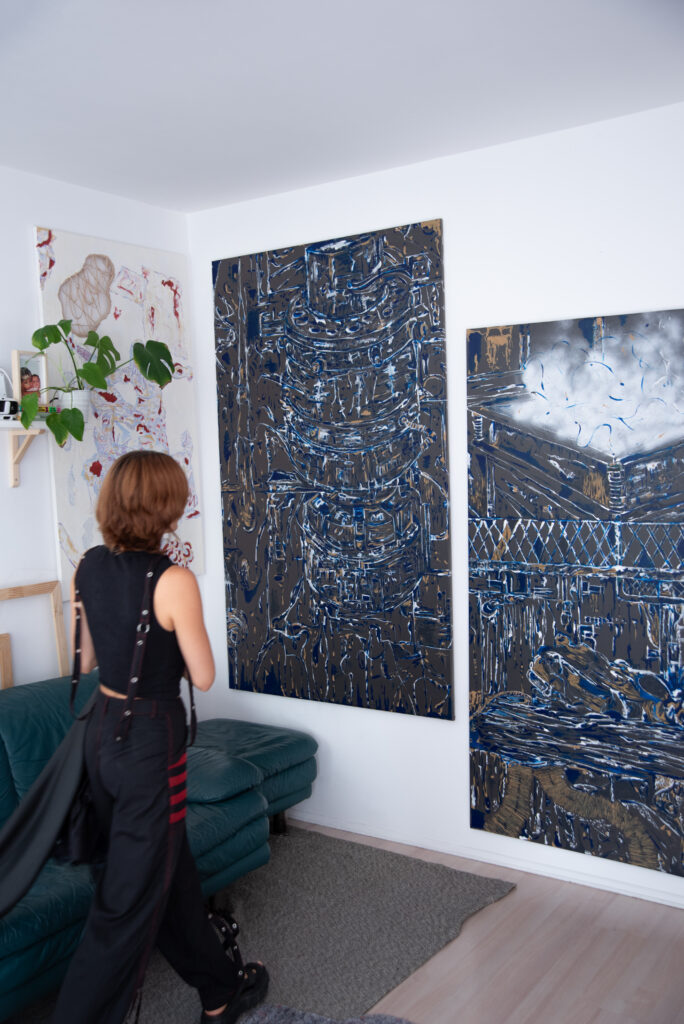
LMG: What role does creating art play for you?
LF: I think something that’s very important in my practice is using all these different tools tocreate fictional images. And these fictional images, like I read a lot of Donna Haraway, are a space to project alternative realities. There is ongoing talks about the future, and the future of ecology. My work revolves around ecology because I’m working with secondhand material. So for me, there’s a lot of thinking for the now, and how to create these fictional spaces so you can literally project realities for contemporary times. And what I mentioned in the first question, I think showing these connections is very important to me. So the connections in between people, the connections in between people and actually non-living elements as well.
LMG: What does your creative process look like?
LF: It’s not linear. Because I work with so many different mediums. So I would say that my creative process started years ago and I don’t think it ever stopped. For me, it’s like a constant cycle of transforming old sculptures into new projects. Even taking a painting and then painting over it. So it feels like the images, once I start building them, because I look at them as like prosthetics, as if they’re like all these different limbs or these loose organs of a very big organism that is my work. For me, they have a life of its own once I put the information and the visual codes there. And then, they are always transforming because with time, whenever you install them, there’s always a different wrinkle or some marks of the way you attach them. I like to think of them as living beings. My creative process started with the first performance I did back in Brazil, when I was doing these durational performances where I was stitching on my own body. Not the skin, but stitching on tights. I had my whole body encapsulated with tights and then I was stitching over it. After that this image of a cocoon or a prosthetic placenta, all of this evolved into many different things. So I would say my creative process as a working artist, with research, started there. Then it’s film or it’s reading or drawing, writing. I’m writing a lot. Sometimes I’m kind of stuck with an idea for months. And then suddenly I sit for a coffee with a friend and we’re talking about something random. And then the work comes up, and something evolves from there. These clicks of how do you fix and formalize work, they come in so many different moments.
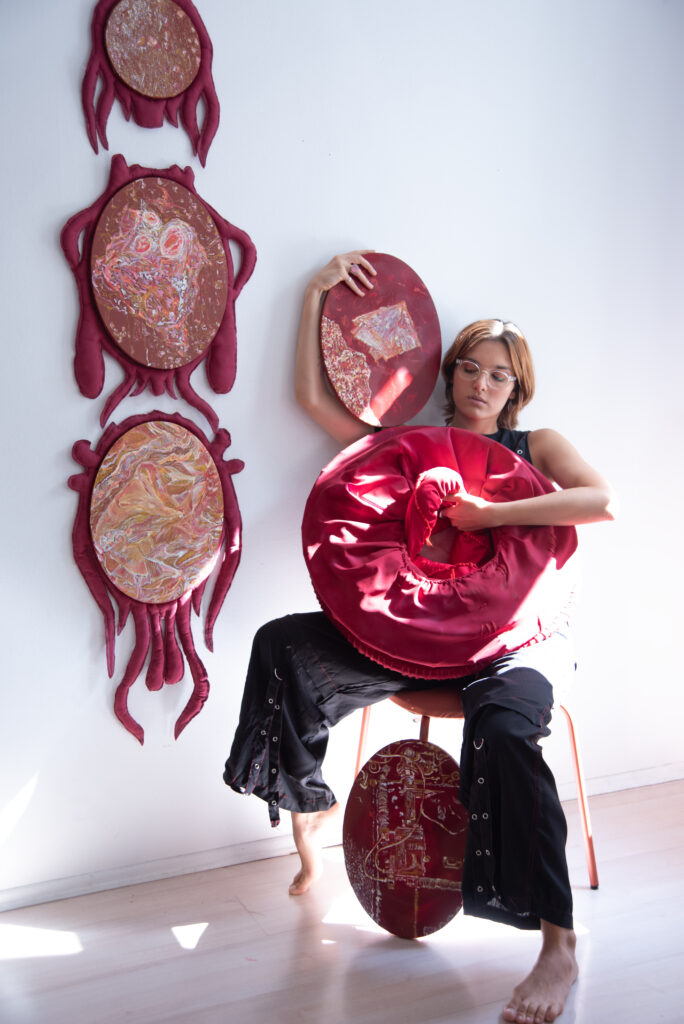
LMG: What inspires you?
LF: Definitely being attentive to the work of other artists. I consume a lot of books, movies. Especially being present in the times, seeing what’s going on on Earth. But mostly I’m super interested in topics of ecology. So everything that touches around the topic of nature. But in a more technical way, when I was in design uni, there’s this field of design called biomimetics. It’s basically looking at nature and then solving human problems by looking at its systems. It’s very poetic in a way and I think I bring that a lot into my practice.
LMG: What is your experience with the art world?
LF: I think it’s impossible to say I have only one experience because I feel the art world allows me to have many different encounters. I’ve encountered really good, supportive friendships, great artists to collaborate with. I’ve encountered people I would not like to work with again. I think it’s an area as if it is any other area. You encounter all kinds of different people. Mainly I’m very happy with the artists I constantly have collaborations with. So I would say that in general, the art world has been very generous with me. But I think I’m mainly talking about colleagues, people producing and thinking art. Because especially when you’re dealing with topics of ecology, I think it’s topic of collective interest. For me, the more I can expand this circle and be in contact with different people, this becomes part of the practice, part of something that exchange which interests me as a performance artist and person in general.
LMG: Is there something you want to change about the art world? And if yes, what and why?
LF: I think it’s very interesting if more and more people are open for like collaborations, shared space for debate. I think in general, like this openness, it’s something that would be really amazing to encounter more in the art world. I think a culture of openness, of honesty, how do you get the material? How do you work with the materials? This availability to share knowledge, exchange and listen to someone, things like that.
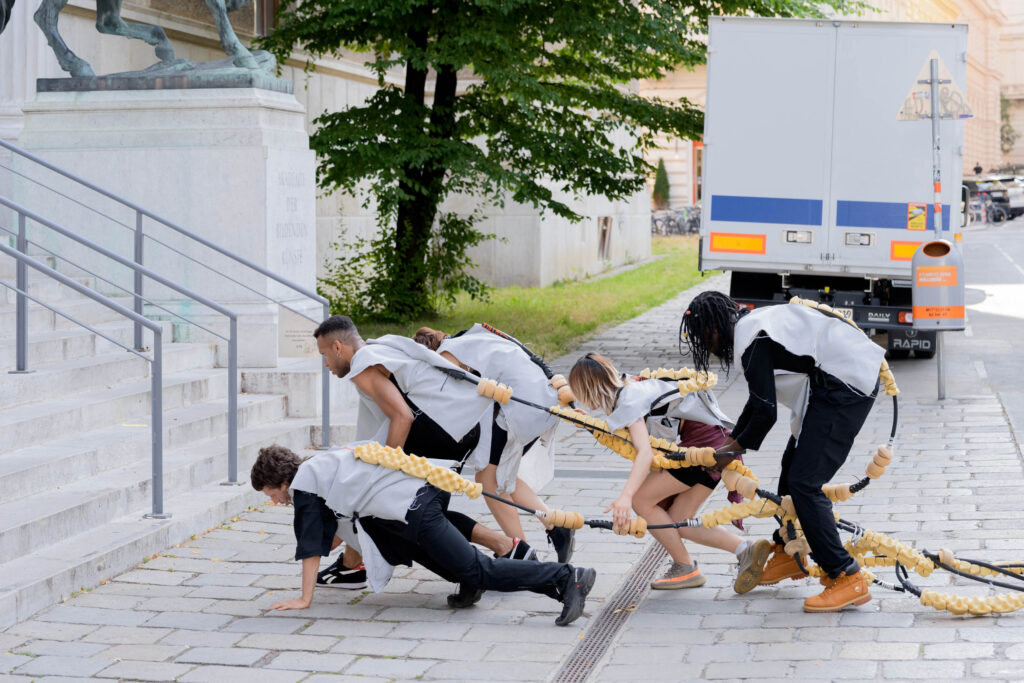
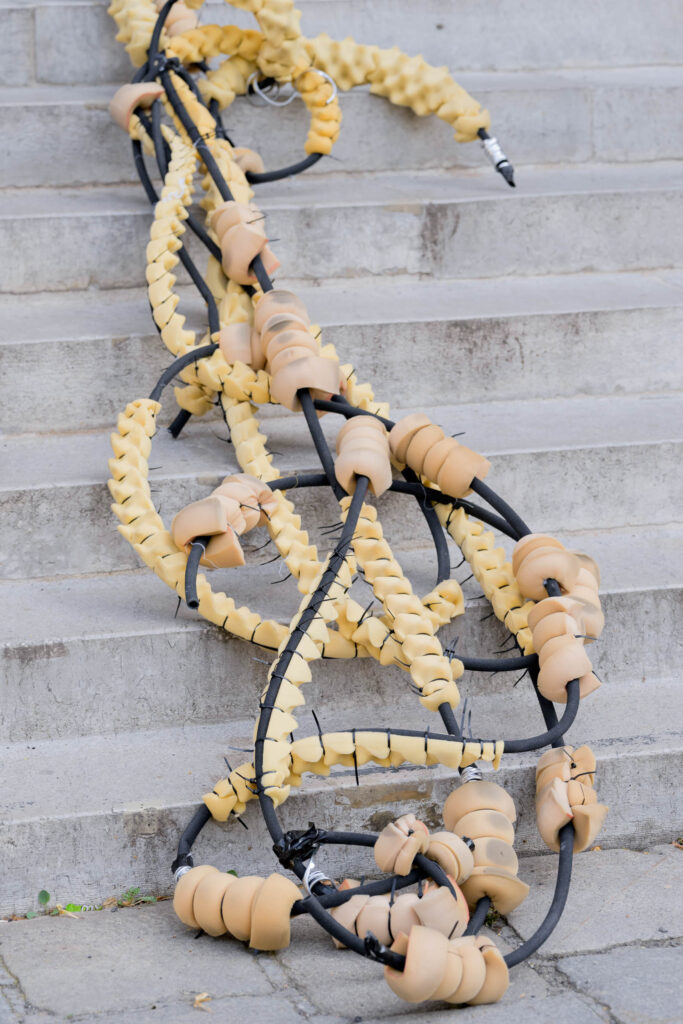
LMG: What do you think is/are the role/-s of art and artists in our society?
LF: There is one role of art, which I think it’s very important, to have all these different positions and experiences. So one can see themselves there or see their emotion. There’s something about art that often you’re going through something very difficult or experiencing something for the first time and then you find that one book or that one painting, which is like a strong image or a song. And this makes you feel like you’re not alone because someone else has experienced that or has thought about that. And I think it has this place of being a little bit like a path. Like a space where you can go to. Often I found myself, as a sensitive person, questioning or thinking about something but not necessarily having the words to express it. And then someone else sometimes has the words or the image. So for me, it’s this very general thing about producing culture, sharing culture, and then someone else being able to relate to it. On the political side, I think it’s an extremely important platform so people can comment directly on the things that are happening in real time on the world or have been happening for a long time. I think art as a space of historical documentation, historical rewriting, historical writing in general, it’s very important.
LMG: What artist or artists (dead or alive) would you like to meet? And if you had one question, what would you ask them?
LF: For sure, I would like to meet Louise Bourgeois. Have you ever seen Louise Bourgeois dressing her works? Or have you ever seen other people dressing her works? I would ask her, why did you not invite lots of bodies to dance here? Because her work for me looks very alive. I would love to see it in movement. Like in a theater piece and all the sculptures moving and being touched. I think maybe that’s my question; Why can’t we touch your sculptures? Because they almost ask for it. Definitely Donna Huanca. I think Tania Bruguera has a very interesting work, and I’m especially interested in her work with archives. There’s this performance she made reenacting one of Ana Mendieta’s performances. The way she explains the work and I the way she comments politics and archive is super beautiful. I would love to meet her. I read a lot Donna Haraway, for sure I would love to meet her.
LMG: Is there something you want to achieve in your art life, like dreams, future plans or projects you would like to do?
LF: I for sure want more and more to create this frame in which I can do group dances, because it’s something that you need a rehearsal space for. I would like to do it more and more constantly, like present group choreographies. I would definitely love going into teaching. It’s a dream because I like being in spaces where you’re thinking together with other people, reading, exchanging. Since I’m only working with found and donated objects. I do that to talk about what it means to create these images? What does it mean to put new objects in the world and all the ecology part? But I would like to combine this with active design. So for example, having these sculptures placed, in public space in a way that they can clean water or absorb oil, so really combine the designer part of my practice and projects I have in mind with the visual arts.
LMG: Do you think there’s something that you can bring to this world through your work as an artist that you couldn’t in any other field of work?
LF: Yeah, for sure. I think there’s this space of deep honesty about the topics you’re tackling with your work and I think visual artists do have a lot of freedom in that. You’re not answering to a superior, there’s not someone approving your project, when you’re working as an autonomous artist, which is my situation right now. I’m not signed with a gallery, there’s no one saying yes or no to my work. When you’re interested in topics which are political, the choice of the topics you’re dealing with, you have freedom to create your frame and to speak about it: depending on the context you are in. I think this is very important. But I would say that now being in Vienna, working in the institution I’m working in, in the framing I am experiencing right now, I think this freedom of tackling into these sensitive topics, is something that I couldn’t do in a different field of work. I do freelance now as a designer, but I’ve worked non-autonomous for other people. It’s very different, the images you get to create. Because as a designer often you’re packaging things so people buy it. And that’s not something that moves my heart the way talking about critical ecology does for example.
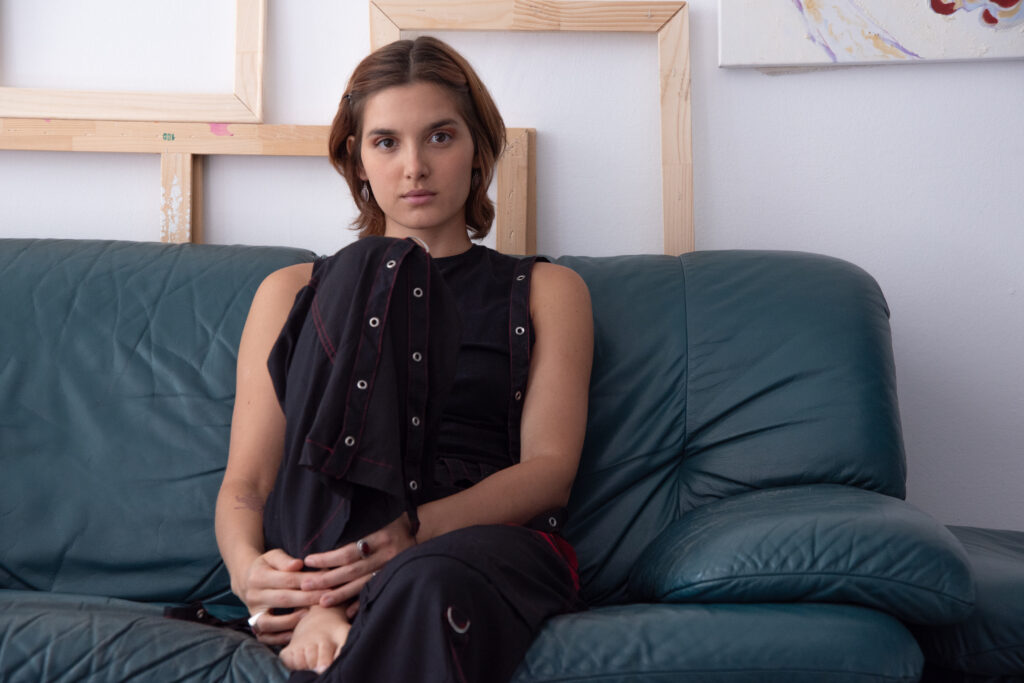
Photos Credits:
1rst, 2nd, 3rd, 4th and 7th photo: ©Allegra Kortlang
5th and 6th photo: ©eSeLat / Joanna Pianka
Instagram: https://www.instagram.com/luizafurtado__/






